[MoCH] Japanese art of (making) love
 •
by
•
by Nobunaga Sensei
NOTE: This article is not a pornographical,it depicts a renome Japanese art
In November 2013 the British Museum in London has organized a special exhibition of Japanese art is more than 1,500 paintings and prints created most of the period of the eighteenth and nineteenth centuries. The exhibition has caused a lot of controversy and shocked her visitors. These pictures belong to the Shunga art.


Word shunga in Japanese means spring, so this art is literally translated as the art of spring. It depicts human sexuality, and celebrates the sensual side of every individual. The name for the art direction is likely to remind his fans of the birth process and create a new life that is repeated every spring.

Shunga has its origins in Ancient China. It were initially inspired by illustrations in Chinese medicine manuals.At first it was the reserve of the courtier class. Because of many sexual scandals from the imperial court or the monasteries characters were depicted as courtiers and monks.


Thanks to the introduction of woodblock printing techniques, the quantity and quality increased dramatically. Daimoys wanted to ban this type or art. Reasons were the depiction of lastfull samurai lords and their hidden relationships with young boys.

Shunga paintings were produced and sold either as single sheets or—more frequently—in book form, called enpon.Shunga was also produced in hand scroll format, called kakemono-e (掛け物絵). Pictures are vivid and colorful with many details.Also pictures were accessible to all readers- traders, farmers, citizens, samurai and even rich and respected lords. Some rich ladies were also a customers.

Characters in shunga are ordinary people, the chonin, the townsmen, women, merchant class, artisans and farmers, Dutch or Portuguese foreigners(foreigners were exotic and new for Japanese-perfect for fantasizing).Kibuku artist(young men) were also in shunga.Backstories in pictures are numerous-men seduce women, women seduce men; men and women cheat on each other; all ages from virginal teenagers to old married couples; even octopi were occasionally featured.
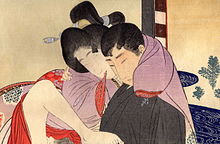

While most of shunga were heterosexual many depicted male-on-mele,woman-on woman,masturbation scenes...Visitors of the exhibition were confused. Why are person during sexual act in the pictures dressed.This is primarily because nudity was not inherently erotic in Tokugawa Japan-people were used to seeing the opposite sex naked in communal baths. It also served an artistic purpose; it helped the reader identify courtesans and foreigners.Shunga couples are often shown in nonrealistic positions with exaggerated genitalia. Explanations for this include increased visibility of the sexually explicit content, artistic interest and psychological impact.

Famous shunga artist were Hishikawa Moronobu Tomioka Eisen Suzuki Harunobu Kitagawa Utamaro and Katsushika Hokusai. Hokusai well known shunga" The Dream of the Fisherman's Wife" could be seen.Story goes that fishermans wife had stolen a treasure from Dragons palace under the sea.
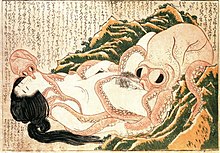
Her punishment is a giant octopi.Its tacles brought a woman to sexual excitement,and she was unwear that octopi is draging her into the bottom of the ocean.

The introduction of Western culture and technologies at the beginning of the Meiji era particularly the importation of photoreproduction techniques, had serious consequences for Shunga.Shunga could no longer compete with erotic photography, leading to its decline.Legacy of shunga are modern hentai manga and anime.
and now some pic
😃
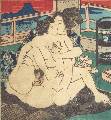
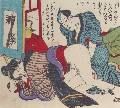


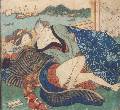


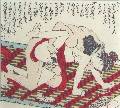



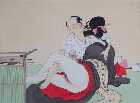







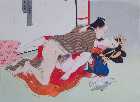



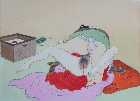
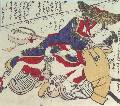



Comments
for shout
http://www.erepublik.com/sr/article/-moch-japanese-art-of-making-love-2362456/1/20
Секс и само секс.
votirano
Reported for pornography 😛
But i liked the article 🙂
Jedan od nacina da zainteresujem ove nase eJapance je da im prikazem ovakve slike.Sta ces vole ljudi ses vise ne leba da jedu 😃
Its recogniced as "art".
So all boobs and tentacles in it are automaticly "tasteful" instead of porn.
Isn't culture a wonderfull thing? 😁
v
This reminds me of one episode from Samurai Champloo
voted~
It even has tentacle po*n origins. 😛
http://i.imgur.com/O7ENNdS.jpg
Talking about educational article xD
v
v
So, now MoCH teach kamasutra in Japanese way? 😮
btw, voted
wkwk kamasutra~
MoCH wants to learn eJapanese how to mak a baby.We want baby boom 😃
its a tough job, but someone got to do it 😛